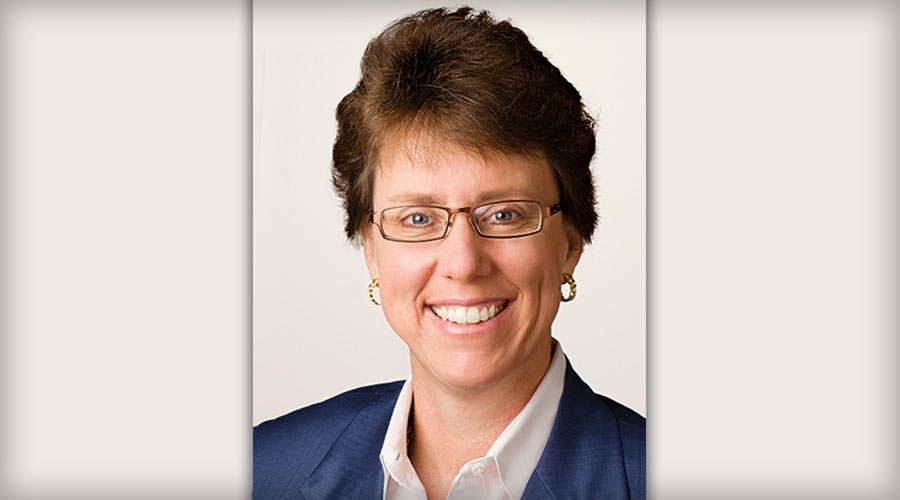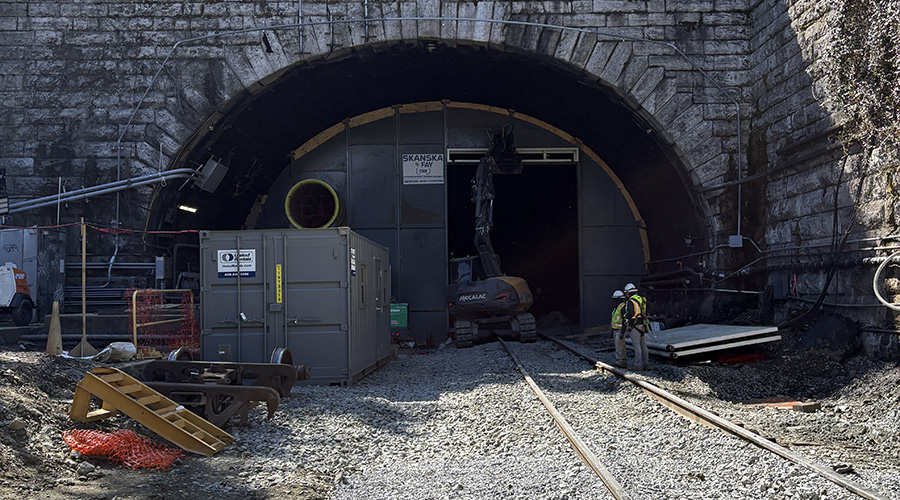BNSF, CSX, NS and UP lay out rail-service recovery plans
5/5/2022
By Julie Sneider, Senior Associate Editor
Last week, the Surface Transportation Board heard from dozens of representatives of railroads, rail labor unions, rail customers and shippers who testified on the recent service problems that have been plaguing the freight-rail industry.
STB Chairman Martin Oberman called the two-day hearing April 26-27 to address the flood of complaints the board has received in recent months about inconsistent and unreliable rail service that has hurt shippers’ and customers’ ability to get their products to market.
Oberman requested that four Class Is — BNSF Railway Co., CSX, Norfolk Southern Railway and Union Pacific Railroad — appear in the STB’s board room in Washington, D.C., to explain their companies’ recent poor service and what they’re doing about it.
The hearing included perspectives on the extent of the problem, perceived and explained causes, the railroads’ recovery plans and potential regulatory solutions. All of it occurred against the backdrop of the board’s decision days earlier to issue a proposed rulemaking to amend its emergency service rules to provide relief for shippers in certain circumstances. The proposed rule would clarify that the STB may act on its own to direct emergency rail service and establish an accelerated process for acute service emergencies.
Several high-ranking executives from BNSF, CSX, NS and UP testified over the two-day period. All attributed the current service problems to the impacts of the pandemic, train crew shortages and hiring challenges in a tight labor market. They acknowledged stakeholders’ service complaints and agreed their railroads’ performance wasn’t where they wanted it to be. And they explained what their companies are doing to accelerate hiring of train crew members and reduce traffic congestion at key network points.
Although they were not asked by the STB to appear at the hearing, executives from CN and Canadian Pacific also testified.
CSX President and CEO James Foote was the only Class I chief executive officer to appear before the board to answer members’ questions directly. Foote spoke after CSX EVPs Jamie Boychuk and Diana Sorfleet explained how the company is responding to the service issues. After the railroad’s operating model was implemented in 2017, service improvements were reflected in CSX’s performance metrics in 2019 and first-quarter 2020 before the pandemic hit, Boychuck said.
“We were providing our customers with better service than we had in the history of our railroad,” he explained.
But once the pandemic took hold and some furloughs were implemented due to an initial and dramatic decline in traffic, it was a challenge to recall everyone quickly and hire additional employees to service the sudden rebound in traffic. The railroad also experienced attrition among existing employees and higher dropout rates among new recruits as concerns about COVID grew, said Sorfleet.
CSX’s efforts to recruit new train and engine-service (T&E) employees and retain existing ones have included bonuses paid to employees who refer candidates to job openings; trainee pay increases to be more competitive with other industries; an expansion of trainee class size; incentives for current employees who get vaccinated against COVID-19; rewards for excellent attendance; and bonuses for workers who voluntarily transfer to an understaffed location.
The company also is being more transparent with customers about staffing issues.
Supply-chain challenges have begun to ease and CSX’s hiring initiatives are starting to increase the railroad’s T&E headcount. But the hiring initiatives will take time to be reflected in CSX’s performance metrics, Sorfleet and Boychuk said.
“The hiring we accomplished in the first half of this year will positively impact the movement of freight in the second half of this year,” Sorfleet said. “Based on our current trajectory, we believe we will be back to pre-pandemic T&E numbers sometime in the third quarter. And thereafter, we will continue to hire to stay ahead of attrition and meet the needs of our business growth.”
CSX CEO Foote responds to STB questions
Following the presentations by Boychuk and Sorfleet, Foote stepped up to the witness table to address the board and answer members’ questions.
“We have struggled, we have under-performed and we have worked our way through the last two years of going into and out of the pandemic,” Foote said. “We have worked like dogs — not just the management team, but every employee at CSX has worked like a dog to do the best job they could under unbelievable circumstances to meet the needs of the customers.”
CSX’s goal is not just to get back to its high-performance levels prior to the pandemic, but to improve beyond those levels, Foote told the board. The only reason for the railroad’s performance issues now is that “we don’t' have enough conductors on the trains,” he said.
In response to STB Member Robert Primus’ question about whether CSX erred in slashing its workforce “to the bone” to get to an operating ratio (OR) that satisfies investors, Foote said: “We don’t operate to have an operating ratio.”
“We set a budget, a three-year strategic plan based on what our revenue opportunities are and what the realistic costs are for us to be able to deliver based on the market demand for rail service,” said Foote. “The costs are not artificial. Then you have cash from that to spend $2 billion just to start next year where you ended this year by putting in rail, ties and ballast. None of this is artificial.”
Primus noted that before the pandemic, Foote talked up CSX’s falling OR when speaking to investors. Foote explained that was because CSX’s new operating model was making the railroad run more efficiently. More recently, CSX’s OR increased as the company made “strategic investments” in its operations, Foote noted.
Class Is defend PSR
Rail workforce reductions made as part of precision-scheduled railroading (PSR) operating models adopted by the Class Is before the pandemic was a common theme throughout the hearing. Several shippers and labor union representatives pointed to PSR as the culprit in the Class Is’ rail-service crisis. But NS Executive Vice President and Chief Operating Officer Cindy Sanborn noted that “returning to operating models of the past” would not solve current rail-service problems.
“If the railroad industry is to stay in the game with trucking, we can't return to the old ways of doing things. A simplified rail network that promises network fluidity is good for everyone,” she said.
 “In my 30-year freight-rail career, I’ve never seen the overall market shock that we are experiencing today." — NS Executive Vice President and Chief Operating Officer Cindy Sanborn secretary.emory.edu/board-of-trustees
“In my 30-year freight-rail career, I’ve never seen the overall market shock that we are experiencing today." — NS Executive Vice President and Chief Operating Officer Cindy Sanborn secretary.emory.edu/board-of-trustees Sanborn attributed the service problems to a combination of challenges stemming from the pandemic’s impact on the economy.
“In my 30-year freight-rail career, I’ve never seen the overall market shock that we are experiencing today as a result of pandemic-related worldwide supply-chain disruptions, changes in consumer spending and market flows and a historically challenged labor market,” she said.
NS is taking several steps to keep rail traffic flowing.
“Hiring and training conductors is the No. 1 priority and the key ingredient in Norfolk Southern’s service recovery plan,” Sanborn said. “Hiring is at historic levels, with new classes of conductor trainees starting every week. We have over 850 employees in conductor training.”
As those conductors complete their training and report to the field, “they will have a direct, positive impact on service,” Sanborn said.
BNSF and UP executives also discussed their respective railroads’ efforts to step up recruitment and retention of the train crew workforce and take other measures to restore service.
BNSF’s “aggressive” recovery plan features a short-term reduction of active inventory; increasing its active locomotive fleet, including the deployment of 100 more locomotives in the next month and using overtime to repair locomotives faster; and improving crew availability, said BNSF Vice President of Transportation Matthew Garland. Regarding the latter, BNSF has recalled all furloughed crews in the Pacific Northwest, California, Montana and the Twin Cities; is offering incentives for crew members to transfer to the Pacific Northwest; and is hiring additional train yard and engine (TY&E) workers.
BNSF’s TY&E headcount is up more than 3% from a year ago, even though volumes are down 2%, Garland said. BNSF has also changed its attendance policy that allows for more predictability for workers and customers. The so-called “hi-viz” plan marks the first attendance policy shift at the railroad in 20 years. The policy shift has raised the ire of labor unions, but Garland said BNSF has made some adjustments to it based on employee feedback.
“Unfortunately, some of the public rhetoric about our new policy is untrue,” said Garland, who then addressed some of the falsehoods. “Our employees are still able to use their vacation and paid leave days.” Reports that the policy has prompted “mass resignations” or that employees must work 14 straight days in order to achieve a good attendance credit are also untrue, he said.
“We have an aggressive plan to hire, train and employ 3,000 people across transportation, engineering and mechanical departments, and we are on pace to make that goal,” said BNSF Vice President and Chief Human Resources Officer Judy Carter.
On the crew side, BNSF plans to employ up to 1,700 additional crew members and has 300 crew members in training. The railroad has recalled employees furloughed last year and is streamlining the application process to speed up hiring, she said.
A focus on diversity to find new workers
Meanwhile, UP reduced its headcount when COVID shutdowns reduced demand. Once freight volumes began to rebound, the Class I ramped up the recall of furloughed workers.
“Like other businesses, we found a significant number of employees — around 50% — were choosing not to come back,” UP EVP of Sustainability and Strategy Beth Whited told the STB. “As volumes went back up during the pandemic, we met headwinds in meeting our hiring goals.”
Currently, UP has no furloughed train service employees, she said. The Class I’s hiring efforts are focused on current and future needs.
“Our plan is to hire 1,400 train service employees this year to offset our expected attrition and grow our workforce,” Whited said. “Increasing the breadth and diversity of our hiring pipeline is a critical way of meeting our present and future hiring needs.”
In addition to its aggressive hiring strategy, UP is adding 100 locomotives where necessary and working with customers to reduce the number of private rail cars in inventory to improve service. UP has announced a temporary plan for metering traffic — a move that’s drawn criticism from some shippers — to help alleviate congestion, said EVP of Operations Eric Gehringer.
Although many speakers representing labor and shippers during the hearing asked the STB to consider adopting rules or procedures to restore rail service to acceptable levels, the Association of American Railroads asserts that “re-regulating” railroads is not the answer.
 “The STB should proceed strategically and deliberately, particularly when considering structural policy shifts.” — AAR President and CEO Ian Jefferies AAR.org
“The STB should proceed strategically and deliberately, particularly when considering structural policy shifts.” — AAR President and CEO Ian Jefferies AAR.org"While the AAR appreciates continued engagement with policymakers, the STB should proceed strategically and deliberately, particularly when considering structural policy shifts," said AAR President and CEO Ian Jefferies in a press release issued after the hearing.
"Disruptions in service should not be used to justify long-sought re-regulatory measures such as forced switching, as this type of market intervention would only complicate network operations further at a time when the focus needs to be on restoring freight fluidity,” he added.


